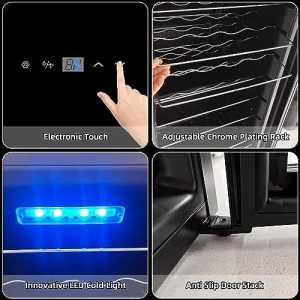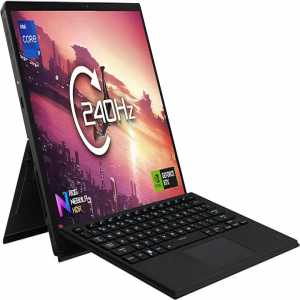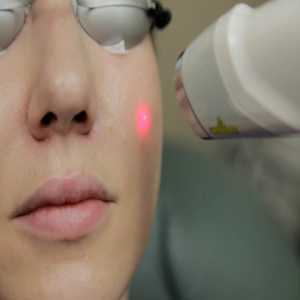
Physical Therapy Vs. Neuro Rehabilitation: Understanding The Differences

Many people encounter the terms "physical therapy" and "neuro rehabilitation " when it comes to recovering from injuries or medical conditions. While these two fields share some similarities, they serve distinct purposes and focus on different aspects of recovery. This blog will explore the differences between physical therapy and neurorehabilitation, helping you understand when each approach is most appropriate.
What is Physical Therapy?
Physical therapy (PT) is a healthcare discipline that focuses on evaluating, treating, and preventing physical impairments, functional limitations, and disabilities. Physical therapists (PTs) are trained to help individuals improve their movement, strength, and overall bodily function. PT is commonly used for a wide range of conditions, including:
- Musculoskeletal Injuries: Sprains, strains, fractures, and post-surgical recovery.
- Chronic Pain: Conditions like arthritis or fibromyalgia.
- Sports Injuries: Rehabilitation after injuries sustained during physical activity.
- Postural Issues: Addressing muscle imbalances and improving posture.
Goals of Physical Therapy
The primary goals of physical therapy include:
- Pain Management: Reducing pain through exercises, manual therapy, and modalities such as ultrasound or electrical stimulation.
- Restoration of Movement: Improving mobility, strength, and range of motion.
- Functional Independence: Helping patients return to daily activities, work, and sports.
- Prevention of Further Injuries: Educating patients on proper body mechanics and strategies to prevent re-injury.
Common Techniques in Physical Therapy
Physical therapists employ various techniques to achieve these goals, including:
- Exercise Therapy: Tailored exercise programs to improve strength and flexibility.
- Manual Therapy: Hands-on techniques to relieve pain and improve mobility.
- Modalities: Use of heat, ice, ultrasound, or electrical stimulation to alleviate pain and promote healing.
- Patient Education: Teaching patients about their conditions, home exercise programs, and preventive measures.
What is Neuro Rehabilitation?
Neuro rehabilitation, on the other hand, is a specialized branch of rehabilitation focused on helping individuals recover from neurological disorders and injuries. This field addresses conditions such as:
- Stroke: Recovery of motor and cognitive functions following a stroke.
- Traumatic Brain Injury (TBI): Rehabilitation after a brain injury due to an accident or impact.
- Spinal Cord Injury: Recovery and adaptation following damage to the spinal cord.
- Neurological Disorders: Conditions like multiple sclerosis, Parkinson's disease, and cerebral palsy.
Goals of Neuro Rehabilitation
The primary goals of neuro rehabilitation are:
- Maximizing Functional Independence: Helping patients regain skills for daily living and improving quality of life.
- Enhancing Motor Function: Improving strength, coordination, and balance.
- Cognitive Rehabilitation: Addressing cognitive deficits affecting memory, attention, and problem-solving skills.
- Psychosocial Support: Providing emotional support and resources to help patients cope with the challenges of living with a neurological condition.
Common Techniques in Neuro Rehabilitation
Neuro rehabilitation employs a range of specialized techniques, including:
- Task-Specific Training: Focusing on functional tasks to improve motor skills in real-life contexts.
- Cognitive Rehabilitation Therapy (CRT): Techniques to improve mental functions, memory, and problem-solving skills.
- Robotics and Technology: Utilizing assistive devices and technologies, including virtual reality and robotics, to enhance motor recovery.
- Multidisciplinary Approach: Collaboration with various healthcare professionals, including occupational therapists, speech-language pathologists, and psychologists, to provide comprehensive care.
Key Differences Between Physical Therapy and Neuro Rehabilitation
- The focus of Treatment:
- Physical Therapy: Primarily addresses musculoskeletal issues and aims to improve physical function and mobility.
- Neuro Rehabilitation: Focuses on neurological conditions, emphasizing recovery of motor skills, cognitive functions, and overall quality of life.
- Patient Population:
- Physical Therapy: Serves many patients, including those recovering from injuries, surgeries, or chronic pain conditions.
- Neuro Rehabilitation: Specifically targets individuals with neurological impairments, such as stroke survivors, individuals with TBI, or those with neurodegenerative diseases.
- Therapeutic Techniques:
- Physical Therapy: Often includes exercises, manual therapy, and modalities for pain relief and functional improvement.
- Neuro Rehabilitation: Incorporates task-specific training, cognitive rehabilitation, and advanced technologies to address the unique challenges of neurological recovery.
- Goals and Outcomes:
- Physical Therapy: Aims to restore physical function, manage pain, and prevent future injuries.
- Neuro Rehabilitation: Focuses on maximizing independence in daily activities, improving motor and cognitive functions, and providing emotional support.
When to Seek Each Type of Therapy
- Consider Physical Therapy If:
- You have a musculoskeletal injury, such as a sprain or strain.
- You are recovering from surgery, such as knee or hip replacement.
- You experience chronic pain conditions that require management and relief.
- You want to improve your athletic performance or address postural issues.
- Consider Neuro Rehabilitation If:
- You have experienced a stroke and are facing challenges in movement or cognition.
- You are recovering from a traumatic brain injury and need specialized support.
- You have a neurological disorder that affects your motor skills or daily living activities.
- You need a comprehensive approach that includes cognitive, emotional, and physical support.
Conclusion
Both physical therapy and neuro rehabilitation play essential roles in the recovery process, but they serve distinct purposes. Understanding the differences between these two fields can help patients and their families make informed decisions about their care. At The Physio9 Clinic, we offer affordable neuro rehabilitation in Pune, providing specialized support for those recovering from neurological conditions. If you or a loved one is navigating recovery from an injury or neurological condition, seeking the appropriate therapy can make a significant difference in achieving optimal outcomes and improving quality of life.
Whether through physical therapy's broad approaches or the specialized techniques of neuro rehabilitation, the ultimate goal is to help individuals regain their independence and enhance their overall well-being. By recognizing each patient's unique needs and tailoring the treatment accordingly, healthcare providers can ensure that individuals receive the best care possible on their road to recovery.
Author Bio
Article Comments
No Comments!
At present there are zero comments on this article.
Why not be the first to make a comment?
Similar Articles
Search Pages
User Upgrade
account to full use of editor,
Including hyperlinks
Article Categories
There are zero sub-categories in this parent category.
There are zero sub-categories in this parent category.

















